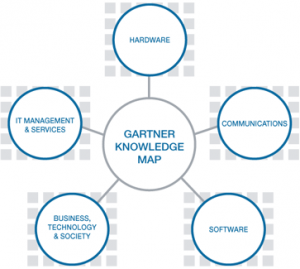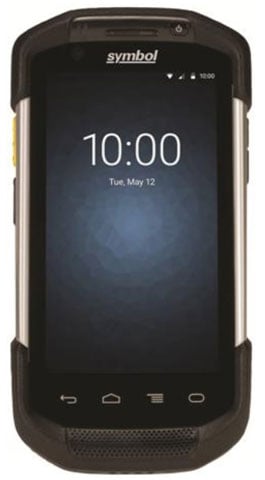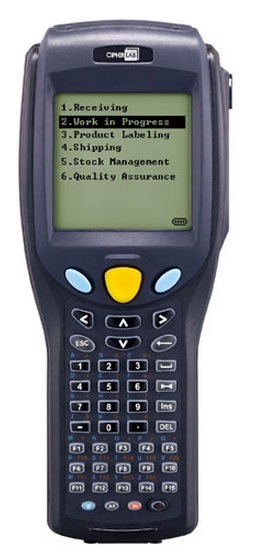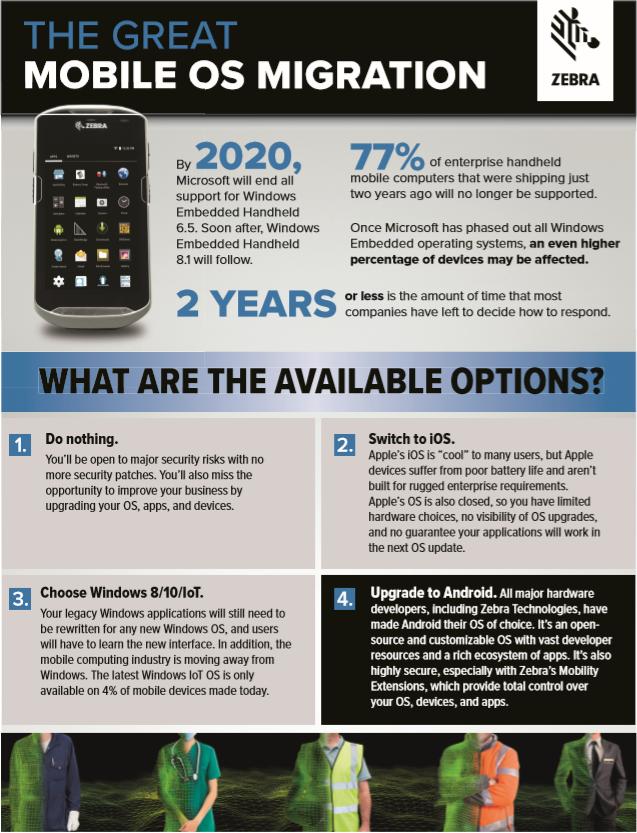ICYMI: Discover the Solution in Manufacturing to Meet Demand & Stay Ahead

In case you missed our webinar today, click on the video and watch Barcodes and Zebra discuss about the solution in manufacturing to meet demands and how to stay ahead of your competition.
Learn about the key takeaways:
- How to help responsive supply chain systems track assets and materials that are continuously on the move.
- Drive efficiency through automation of materials auditing, shipment verification, field asset inventory and more.
- Develop holistic solutions – from endpoints, to connectivity, to software – to bring relevant data to the systems that drive your business.
If you have any questions, please contact our Marketing Coordinator, Maraya Sandoval, at [email protected] or at 312-765-8860.
ICYMI: The OS Migration Webinar

In case you missed our webinar today, click on the video and discover how Barcodes and Zebra can help you with the new Operating System Migration to Android.
Organizations running Windows based rugged devices today will need to find an alternative OS- and upgrade to new devices- before Microsoft ends their support in 2020.
In the video you will learn:
- The dates associated with the expiring Windows support
- How to take advantage of the OS Migration to transition into the mobile enterprise technology
- How Barcodes and Zebra can help you move towards a successful transition path
Feel free to contact us at [email protected] or give us a call at 877-835-0709.
Join us and Zebra for the OS Migration Webinar!

Do you have an outdated mobile computer that currently still runs on Windows operating system? Here’s a fact you need to know, organizations running Windows-based rugged mobile computers today will need to upgrade to new Android devices before Microsoft ends their mobile handheld support in 2020.
For any organizations that fail to act, they will simply fall behind. To simplify the process join us for this free webinar and learn how to take advantage of this new transition into the mobile enterprise technology.
The next generation of workforce mobility solutions will help your workforce increase visibility, efficiency, and productivity. Please join us for this free webinar to discuss and review the dates associated with the expiring Windows support and see how Barcodes and Zebra can help you strategize the OS Migration with ease.
The OS Migration
Thursday, December 13 from 11-11:30 AM CST
Presented by:
Kevin Lollock, Regional Product Manager, Zebra Technologies
Rob Nordby, Channel Sales, Zebra Technologies
Lorna Malja, Marketing Manager, Barcodes, Inc
If you have any questions, please email [email protected] or give us a call at 877-835-0709.
P.S. If you can’t attend the live webinar, be sure to register anyways and we’ll send you the recording and slides afterward!
Make the Right Choice for Your Business and Make the Switch Today!
What will you do when Microsoft ends all support for Windows Embedded Handheld 6.5 and 8.1? It is important to take the time and plan out your strategy to ensure a solution before this takes place. Check out your options below and make the right choice for your business! Contact our dedicated account managers and see how we can help you in this process!
Workforce Mobility Revolution: Transform Your Organization
Klaus Schwab founder and executive chairman of the World Economic Forum once said, “In the new world, it is not the big fish which eats the small fish, it’s the fast fish which eats the slow fish.” His words ring true, especially in today’s technology dependent world. Either move forward or get left behind.
Zebra Technologies does a great job explaining this revolution with, Transform Your Organization By Harnessing the Workforce Mobility Revolution. You’ll learn what this revolution looks like and the benefits it can provide to your organization. To fully realize the potential of workforce mobility your organization will need advanced mobile operating systems, mobile devices, and software solutions. Redefine how your organization gets things done by implementing faster and smarter processes that help propel your organization forward.

Gains to Expect:
- Productivity: From the use of advanced operating systems, devices and purpose-built software applications that speed up workflows.
- Efficiency: Via processes that eliminate waste or complexity.
- Accuracy: With advanced data collection capabilities that reduce the soft and hard costs associated with errors.
To read the full white paper by Zebra Technologies, download your copy HERE!
To help improve your organizations Workforce Mobility please contact our dedicated account managers for mobile solutions!
Tech Tip Tuesday the End of Legacy OS Support: Are You Prepared?
 Most ruggedized handheld devices are powered by legacy operating systems. The problem, the extended support for legacy OS is quickly approaching its end. For infrastructure and operations leaders responsible for mobile and endpoint strategies it’s recommended to stop buying equipment with legacy OSs and begin planning their migration strategies.
Most ruggedized handheld devices are powered by legacy operating systems. The problem, the extended support for legacy OS is quickly approaching its end. For infrastructure and operations leaders responsible for mobile and endpoint strategies it’s recommended to stop buying equipment with legacy OSs and begin planning their migration strategies.
In Gartner’s report, Revisit Your Ruggedized Strategy Before You’re Hit by the End of OS Support, industry analysts, Leif-Olof Wallin and Stephen Kleynhans go in depth on how to overcome key challenges and their recommendations for planning a strategic migration. Their research is based on a large number of inquiries with clients, as well as discussions with technology vendors.

Kleynhans’s and Wallin’s expert research:
- Explains what to stop buying and where to focus planning.
- Evaluates the business case for ruggedized equipment, based on actual requirements and a fully loaded total cost of ownership calculation.
- Outlines when to standardize versus when to diversify the ruggedized device portfolio.
- Describes how to protect current investments in software and systems with application virtualization technology.
To download and read the full Gartner report please click HERE.
Any questions concerning the end of legacy operating systems please contact our dedicated account managers.
Honeywell’s New Mobile Computers: EDA50, CN75, CK75
With the windows embedded operating systems’ support coming to an end soon, now is a great time to plan for the future. It’s important to look into an alternate operating system. Arguably the most flexible and capable OS solution for future devices would be Android. Here are Honeywell‘s latest mobile computer additions, the ScanPal EDA50, CN75, and the CK75 all with an android operating system. Take a look at the devices below with their features to see how they can optimize productivity in your facility.
Android Lollipop for the Zebra TC70/TC75
 Ever since the initial release, the Zebra TC75/TC70 Series has become one of the most popular mobile computers due to its convenient form factor and robust feature set. With over 200,000 unit deployed the TC75/TC70 are helping businesses of all types improve daily efficiencies and empower their workforce.
Ever since the initial release, the Zebra TC75/TC70 Series has become one of the most popular mobile computers due to its convenient form factor and robust feature set. With over 200,000 unit deployed the TC75/TC70 are helping businesses of all types improve daily efficiencies and empower their workforce.
In order to better serve their customers Zebra has announced that Android v5.1 Lollipop will soon be available for the TC7x Series. The upgraded Android OS is expected to be available for download on Zebra’s Support site on approximately August 22, 2016 for TC70 and August 30, 2016 for TC75.
All future devices will have the newest Android OS installed but for customers preferring the older OS versions a simple ‘back-rev’ to their OS version will be available.
Dedicated Operating System for AIDC?
 Automatic identification and data capture (AIDC) and the technologies surrounding it have become commonplace on warehouse floors and in supply chains throughout the world. From convenience stores to major supermarkets or from global shipping centers to your local post office, chances are you’ve seen a handheld device that can instantly scan and share information through phone lines or through a wireless connection.
Automatic identification and data capture (AIDC) and the technologies surrounding it have become commonplace on warehouse floors and in supply chains throughout the world. From convenience stores to major supermarkets or from global shipping centers to your local post office, chances are you’ve seen a handheld device that can instantly scan and share information through phone lines or through a wireless connection.
When thinking about the operating systems behind these devices, one might come to a conclusion that a single operating system would dominate the installed population. The reality is that there are three major variants that are in use in the AIDC space:
- Legacy Operating System — A platform that continues to be used in spite of its obsolescence and incompatibility with modern equivalents.
- Mobile Device Operating System — A mobile device OS generally built to support functions (keyboards, email, text messaging, etc.) and features commonly available on mobile consumer devices.
- Dedicated Handheld Operating System — A operating system specifically developed to support functions necessary for AIDC use (retail floor, warehouses, manufacturing, etc.).
Operating System Strategy for Mobile Computers

After more than a decade of stability using mobile computer operating systems based on successive versions of Microsoft Windows Mobile and its predecessors, the current situation is far more dynamic. Major players in the consumer smartphone market are migrating users to rich interfaces focused on screen interaction rather than keypads. Powerful multi-core processor architectures enable highly responsive applications. The tight integration of sensors, wireless connectivity, and application services frameworks are driving a new paradigm, allowing developers to easily integrate key functionality into their apps via standard system APIs. A large ecosystem has emerged to provide apps, resources, and tools to facilitate development.
But what does this mean for the enterprise? How does a changing user base drive new application interfaces? Which ecosystem should IT embrace for mobile devices? These are questions with no singular answer, yet multiple alternatives are offered for consideration. This paper will outline several options and provide guidance as to which ones may best fit the needs of each individual enterprise.








